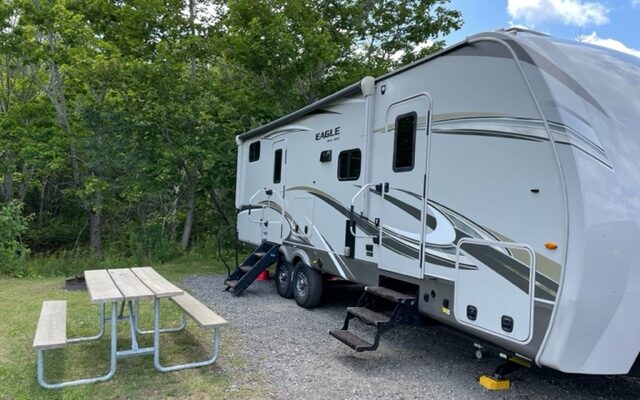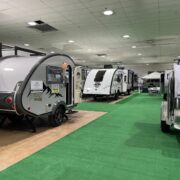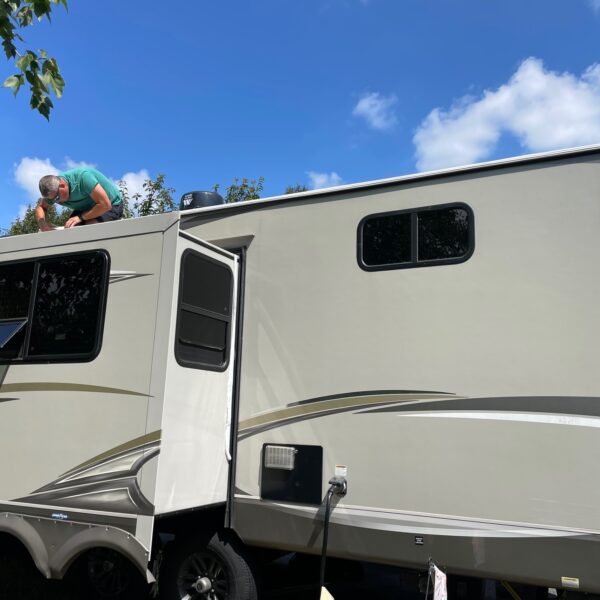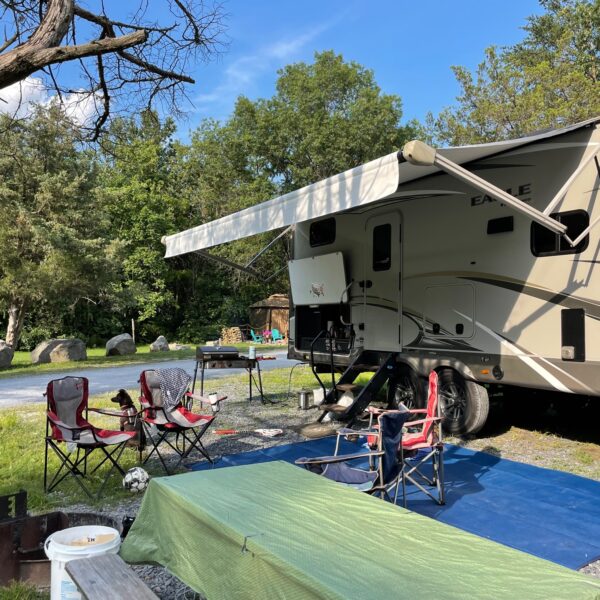
A common question we see and experience often is what to set up and how to prepare for a one-night stay. Often, when we are going a longer distance, we may have several drive days in a row with a single night stay at a campsite. Some people choose to boondock these nights, but more often than not, we still find a campground to stay in.
If we know we’re coming in late and leaving early the next day, we try to get a pull through site that might allow us to keep the truck and trailer connected, which definitely saves time when arriving and checking out. This doesn’t always work out, as sometimes the the electrical outlet is too far forward or the site is not at all level. Even if we cannot stay connected, it does save time and frustration to simply unhook, level properly, but leave the truck in exactly the spot we need to reset the next day. We can usually lower it right on the hitch and off we go.
In addition to trying to stay connected or in position to reconnect easily, we almost always hook up electric, because it really only takes a minute and it is much easier to rely on than our batteries. Depending on how much water we have in our fresh tank and how many more days of travel we have, we may or may not hook up to water. We do try to keep about 1/3 tank of water for traveling, as we use our bathroom and sinks when we stop during our drive. If we know we’ll be off-grid, we will usually fill tanks all the way, even though it is heavier to tow.
I think a lot depends on how long you’ll be parked, and what you plan to do. When we pull into a warm-weather location and still have half a day to enjoy at the park, we may pull out camp chairs or some sports equipment to throw around. We try hard not to need the grill for a single night, as it is just one more thing to pack up late at night or in the morning, as it requires a cool-down period before packing it up. We try to stick with simple dinners that can be warmed on the stove or eaten cold, or sometimes we pick up carryout, and usually use paper products to avoid dishes.
If we are getting in after dark and leaving early the next day, we level from side to side and front to back, pull out the slide, put levelers down (if we aren’t still hooked up) but leave most everything else as is – even trying to minimize what we take out of storage or get dirty.
Keep your tank levels in mind… when did you dump your tanks last and when is the next time you plan to dump tanks and fill water. If it’s the last stop at a campsite before boondocking or staying at a national park, or perhaps you’re on your way home, you may want to make time to dump and flush tanks well before you leave. While it does take some time, it is easier to do at the convenience of your own site rather than finding a dump station and potentially waiting in line for others to finish before you can start. If you do need to find a dump station, you can use a website like RV Dump Sites to find a location along your route.






